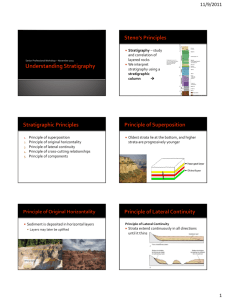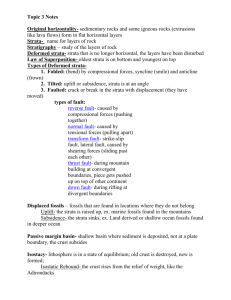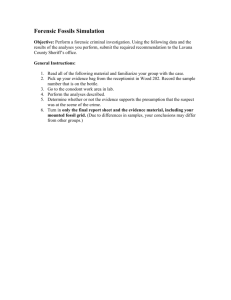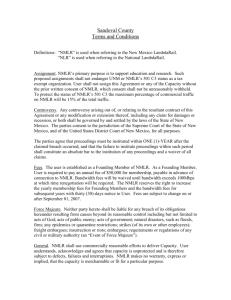Paleontologist Directions
advertisement
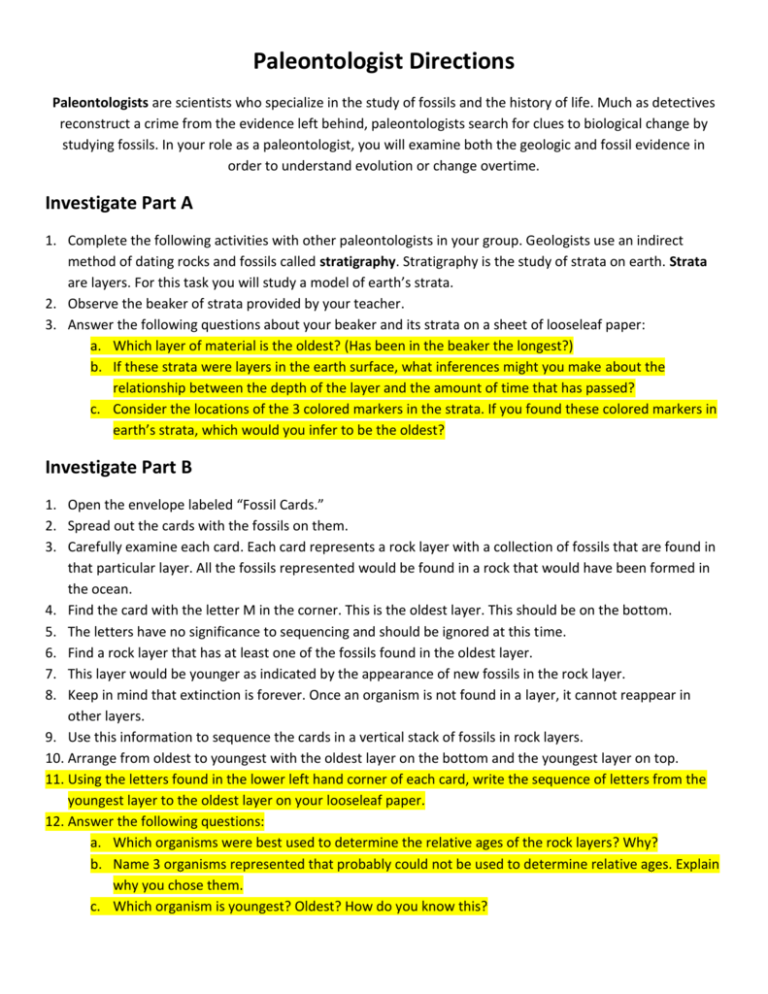
Paleontologist Directions Paleontologists are scientists who specialize in the study of fossils and the history of life. Much as detectives reconstruct a crime from the evidence left behind, paleontologists search for clues to biological change by studying fossils. In your role as a paleontologist, you will examine both the geologic and fossil evidence in order to understand evolution or change overtime. Investigate Part A 1. Complete the following activities with other paleontologists in your group. Geologists use an indirect method of dating rocks and fossils called stratigraphy. Stratigraphy is the study of strata on earth. Strata are layers. For this task you will study a model of earth’s strata. 2. Observe the beaker of strata provided by your teacher. 3. Answer the following questions about your beaker and its strata on a sheet of looseleaf paper: a. Which layer of material is the oldest? (Has been in the beaker the longest?) b. If these strata were layers in the earth surface, what inferences might you make about the relationship between the depth of the layer and the amount of time that has passed? c. Consider the locations of the 3 colored markers in the strata. If you found these colored markers in earth’s strata, which would you infer to be the oldest? Investigate Part B 1. Open the envelope labeled “Fossil Cards.” 2. Spread out the cards with the fossils on them. 3. Carefully examine each card. Each card represents a rock layer with a collection of fossils that are found in that particular layer. All the fossils represented would be found in a rock that would have been formed in the ocean. 4. Find the card with the letter M in the corner. This is the oldest layer. This should be on the bottom. 5. The letters have no significance to sequencing and should be ignored at this time. 6. Find a rock layer that has at least one of the fossils found in the oldest layer. 7. This layer would be younger as indicated by the appearance of new fossils in the rock layer. 8. Keep in mind that extinction is forever. Once an organism is not found in a layer, it cannot reappear in other layers. 9. Use this information to sequence the cards in a vertical stack of fossils in rock layers. 10. Arrange from oldest to youngest with the oldest layer on the bottom and the youngest layer on top. 11. Using the letters found in the lower left hand corner of each card, write the sequence of letters from the youngest layer to the oldest layer on your looseleaf paper. 12. Answer the following questions: a. Which organisms were best used to determine the relative ages of the rock layers? Why? b. Name 3 organisms represented that probably could not be used to determine relative ages. Explain why you chose them. c. Which organism is youngest? Oldest? How do you know this? Reading 1. Open your textbook to p104 “Technologies that Strengthen Fossil Evidence.” 2. Read the first 4 paragraphs in the reading. Stop when you get to the paragraph that begins “Direct dating methods depend…..” on p105. 3. As you read use your Think Out Loud Bookmarks to talk to the text. Annotate and make notes in the margins or on sticky notes. Summary (at least 3-5 sentences): Explain how a paleontologist can use fossils and layers of the earth as evidence to support the theory of evolution? If you need help read the paragraph on p104 that begins “A widescale analysis of fossil evidence….”
